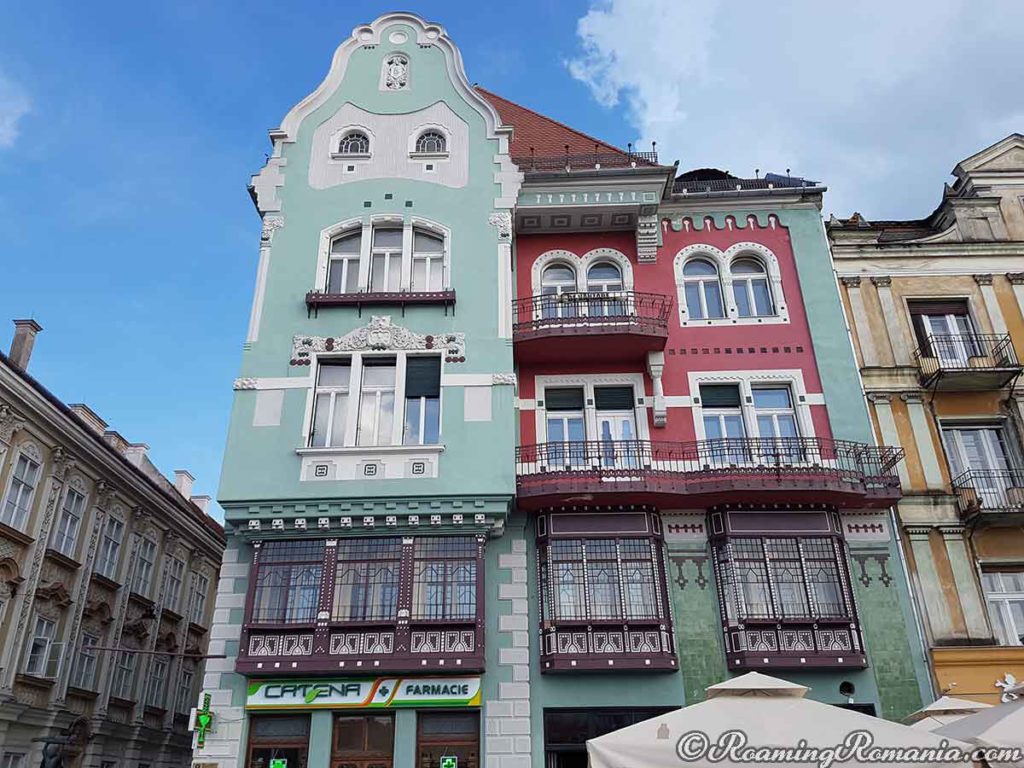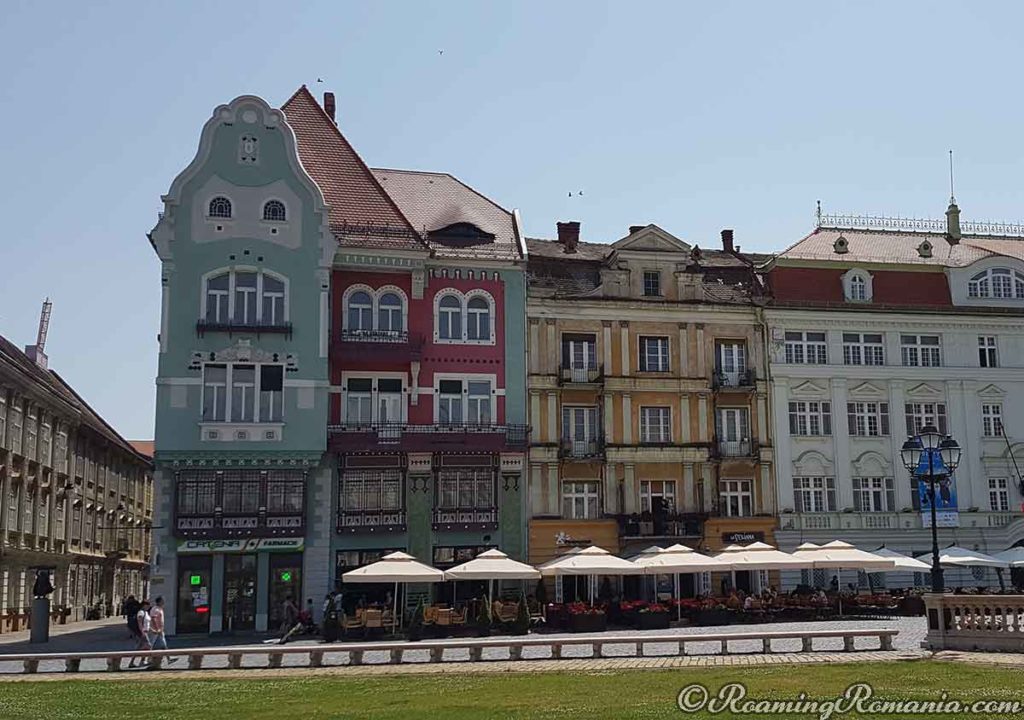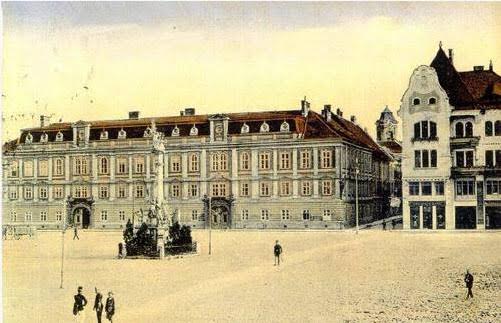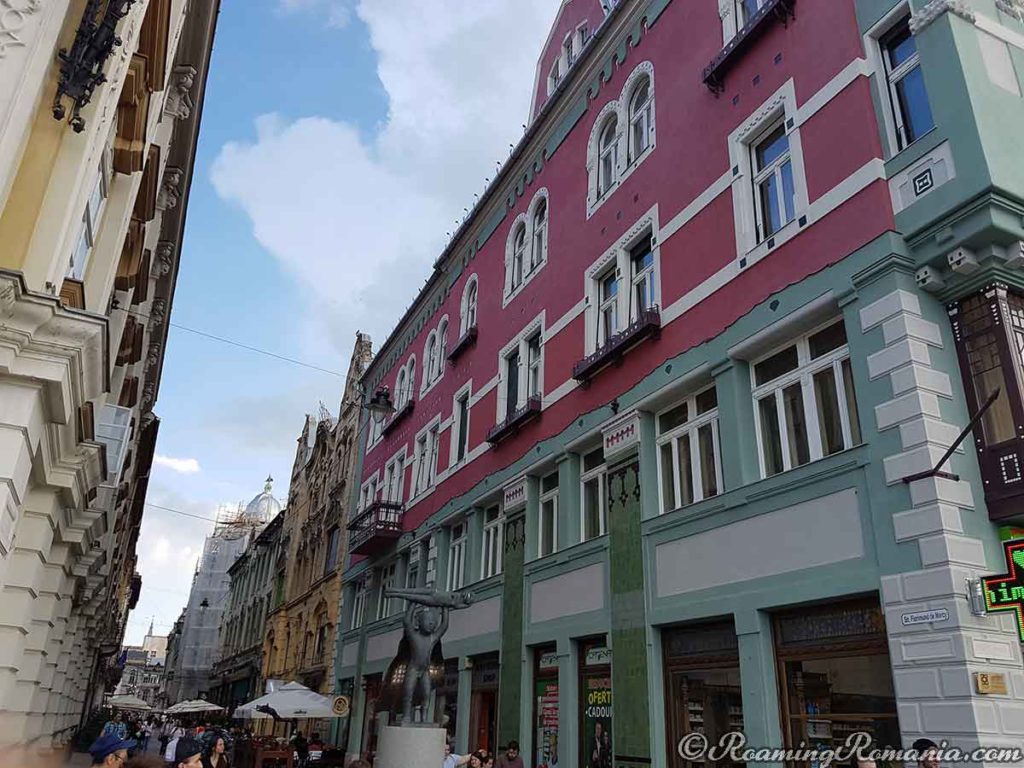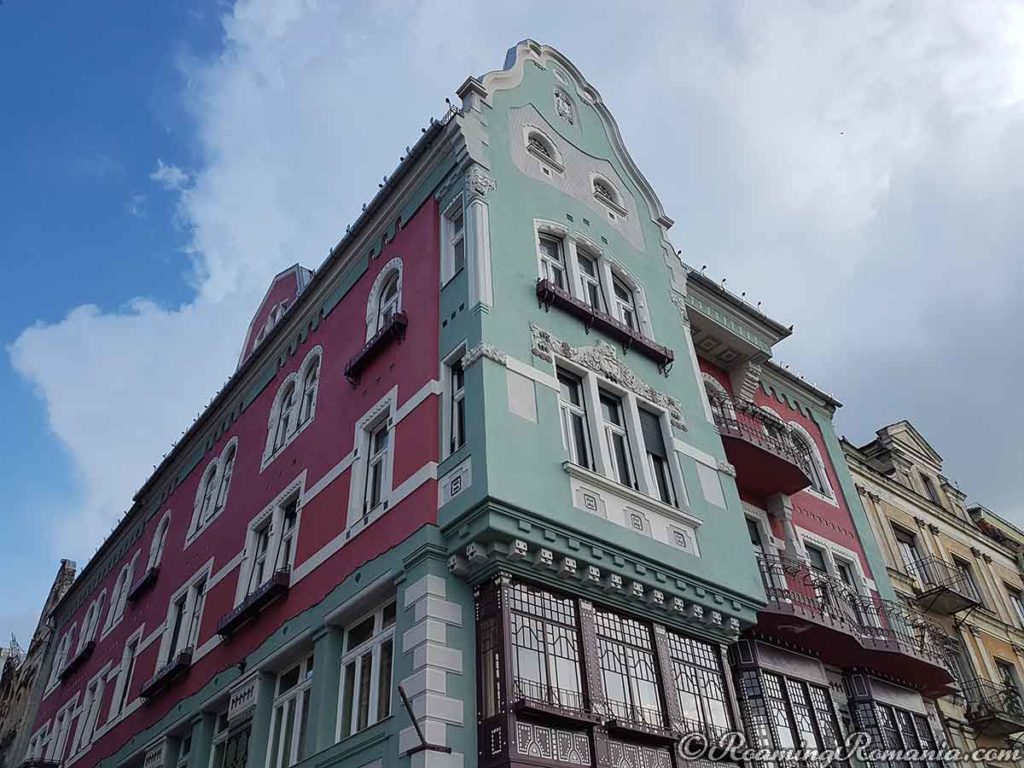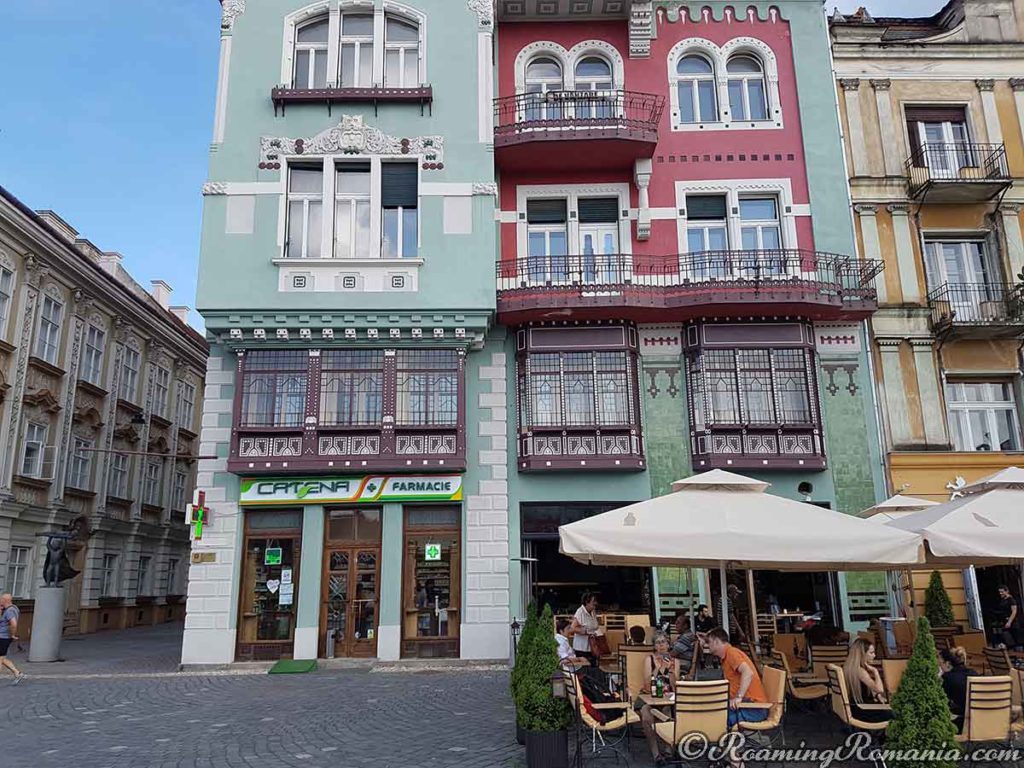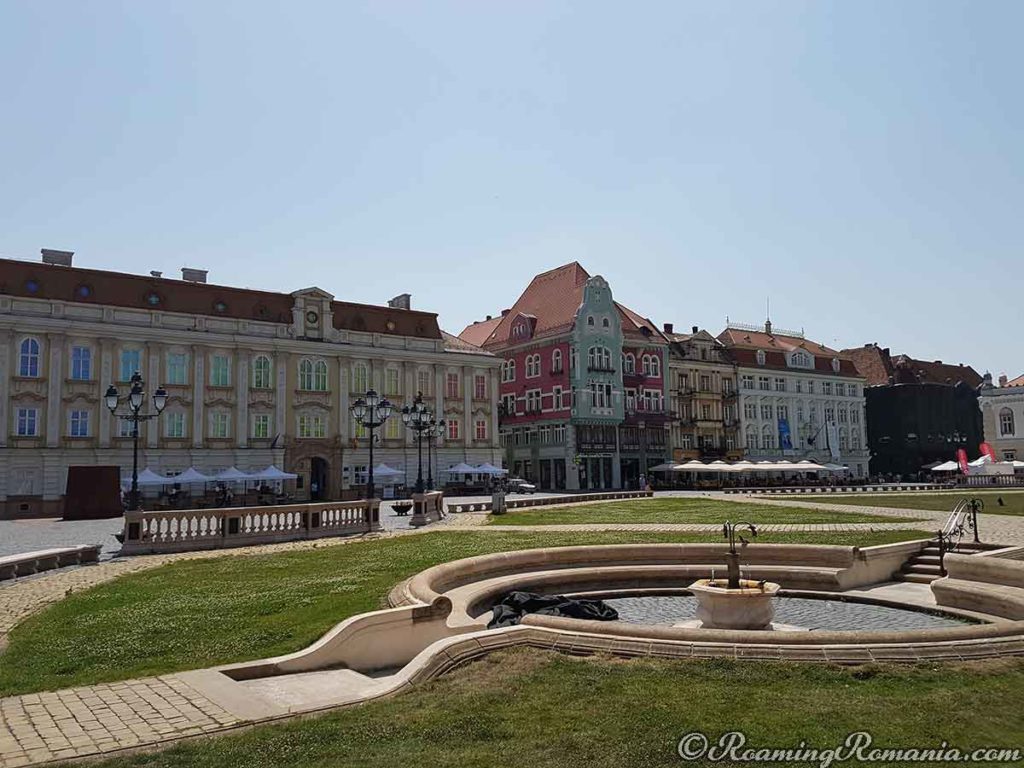Bruck House Timisoara – Summary
The Brück House is an early 20th century Art Nouveau (Secession) style historical monument located in the city of Timisoara, Romania. The four-story building is located in the southern part of the city’s magnanimous Union Square. The Bruck House stands in the location where a previous, Austrian Baroque style, building known as the Golden Cross Pharmacy originally stood in the early 1800s. The original building was owned by the wealthy Zifkovich family until 1910 when the businessman Salomon Brück purchased it so he could operate his own pharmacy out of the structure.
It is said that the Bruck house has always been intended to, and for the remainder of history will host a pharmacy on its bottom level floor. The saying comes from that fact that throughout the building’s over 100-year history, there has always been a pharmacy functioning out of its lower level, including one which operates to this day.
In fact, the present-day pharmacy located inside the Bruck house still uses some of the furniture from the buildings original 19th-century pharmacy. The stained-glass windows found directly above the pharmacy’s entrance also spell out the word Pharmacy in Romanian, German and Hungarian.
Bruck House Timisoara – Table of Contents
- Bruck House Timisoara – History
- Bruck House Timisoara – Architecture
- Bruck House Timisoara – Video
- Bruck House Timisoara – Visitor Information
Bruck House Timisoara – History
The initial history of the Bruck House starts with the story told by historians of the heist gone wrong. The building’s original architect, Arnold Merbl, first built a wooden shack over the area where the structure was to be developed. The press at the time speculated over what was going to be constructed out of the shack, as the building’s purpose wasn’t disclosed yet.
Rumors circulated amongst town locals that the wooden shack was a cover for large deposits of money. The wooden shack was broken into one night by would-be thieves who found nothing but an open office space in its location.
Many decades later from the building’s wooden shack days, the Bruck House became a structure that houses commercial shops and a pharmacy on the ground level, and apartments on its upper floors. Although not fully confirmed, it is said that at a certain point in its history, the building was used as a headquarters for prostitution.
Throughout the years the Bruck House mainly sat unchanged, besides, of course, the degradation and decay it started to accumulate due to age. That all changed starting in 1997 when an Italian businessman named Gianluca Testa fell in love with the building.
Testa felt that the Bruck House in its run-down condition was a sin upon the city. He saw great potential in restoring the building and made it one of his life purposes to get done. The first thing Testa did was buy an apartment in the building. Then, he befriended his neighbors and started to persuade them to contribute money to the restoration of the building.
Due to the building being considered a historical monument, it was extremely difficult for Testa to get the required building permits. It took him three and a half years to finally get the authorization permits to have the structure repaired.
The Italian did a great amount of out of pocket work on fixing the building’s interior, including redoing the stairwell and fixing the faulty plumbing. He and his neighbors put forward about 300,000 Euros, divided between them, to hire developers who specialize in restoring historical buildings.
The team of developers included engineers who reconstructed part of the city’s Theresia Bastion. The developers redid the building using as much of the original design as possible. The redone Bruck House’s façade retained its colors of green and red shades, a new oak door replaced the old one, and the Secession elements remained in place.
Bruck House Timisoara – Architecture
In 1910, the building’s owner, Salomon Brück, hired the highly renown Timisoara architects, Laszlo Szekely and Arnold Merbl, to redesign the building. The front side of the structure still contains the initials “BS” that represent the previous owner. The Brück House was redesigned from the Baroque style, which was the prominent style of the surrounding buildings in Union Square, to the Art Nouveau Secession style.
The Art Nouveau style gained rapid popularity throughout areas of the Austria-Hungary empire in the early 1900s. Many buildings in Timisoara, including the Former Discount Bank in Union Square, started incorporating the Avant-garde style.
The Bruck House contains a basement, ground floor, and three upper floors. The building’s impressive height symbolizes the separation of the dominant Baroque style of the square. The structure’s first and second floors contain beautifully enclosed balconies with curtain walls typical of the Art Nouveau style.
The building’s façade contains a large number of colored ceramic tiles that are inspired by Hungarian folklore motifs. The Bruck House’s corners are not rounded out like what is typical of the Secession style. The architects left them squared in order to distinguish the building from other Secession style structures in the city.
Bruck House Timisoara – Video
Coming Soon
Bruck House Timisoara – Visitor Information
Location
The Bruck House is located in the Historic Union square in Timisoara at the address: Piața Unirii 2
Visitation
The Bruck House is open to visitation daily and year-round, however, access to the inside of the building is limited to the pharmacy and other commercial shops on the lower level. Visitors are allowed to photograph and observe the building as they see fit.
